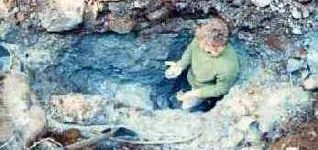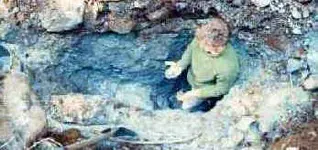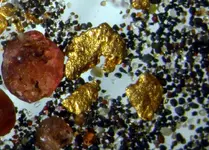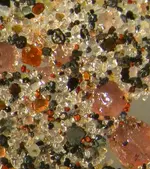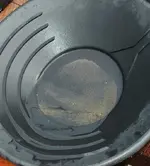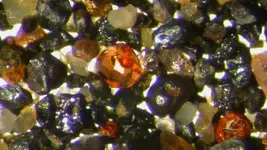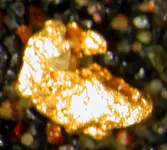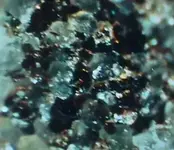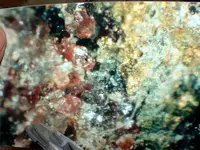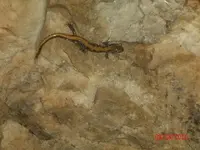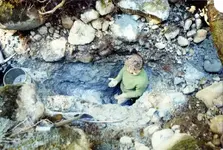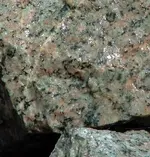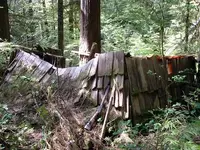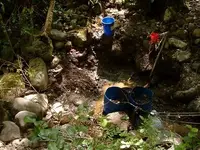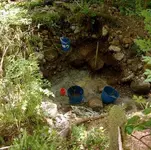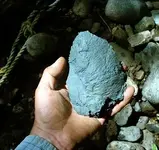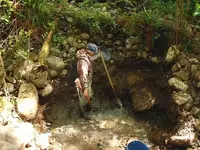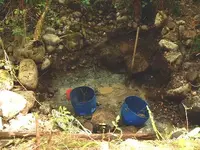You are using an out of date browser. It may not display this or other websites correctly.
You should upgrade or use an alternative browser.
You should upgrade or use an alternative browser.
BLUE CLAY
- Thread starter hmmm
- Start date
Tuberale
Gold Member
- Joined
- May 12, 2010
- Messages
- 5,775
- Reaction score
- 3,451
- Golden Thread
- 0
- Location
- Portland, Oregon
- Detector(s) used
- White's Coinmaster Pro
Your description sounds more like a Kimberlite deposit that one from the Big Blue. Sorry for not reading all the posts in this thread before replying.hmmm said:Klondike
THAT IS VERY ITERISTING
my blue lead stream bed is uique,. it runs due south, it starts near the top of a volcaic crator, just in the troat where a sheer also runs north / south. the blue ground runs for about 2 km then it just dissapears, it looks like the end of a old mine. this is where it gets interistsing, the empty streambed flows for 2 more km then drops into the sea. it has beec cut off as is the land was cut in half. the fine gold FROM THE BEDROCK EXPOSED BELOW THE END OF THE BLUE HARD PANN is very unique. very rough edged.
Kimberlite often forms chimneys in volcanic areas. It is noted for gold, platinum, iridium, osmium, palladium, and other heavy metal production. I haven't seen the entire analysis you had done, but the fact there is platinum, gold and silver concentrations strongly suggests something similar to a Blue Smoker found off the Souhern Oregon/Northern California coast line: known to be very rich in metals and sulfides.
Kimberlite is also noted for diamond production. It is possible some of the "quartz" crystals you are finding may be other than "quartz". Kimberlite is named for Kimberley, South Africa: a center for very deep mining of both gold and silver, but also platinum, palladium, etc.
Astrobouncer
Hero Member
Tuberale brings up an interesting point. I have only recently studied diamond prospecting, but I found this map on the Colorado prospectors forum which shows where the economic diamond deposits are found.

So far, economically viable kimberlite bearing diamond deposits have only been found in the Archons.

So far, economically viable kimberlite bearing diamond deposits have only been found in the Archons.
hmmm
Hero Member
- Joined
- Jun 9, 2007
- Messages
- 830
- Reaction score
- 98
- Golden Thread
- 0
- Primary Interest:
- All Treasure Hunting
- #123
Thread Owner
Tuberale said:Your description sounds more like a Kimberlite deposit that one from the Big Blue. Sorry for not reading all the posts in this thread before replying.hmmm said:Klondike
THAT IS VERY ITERISTING
my blue lead stream bed is uique,. it runs due south, it starts near the top of a volcaic crator, just in the troat where a sheer also runs north / south. the blue ground runs for about 2 km then it just dissapears, it looks like the end of a old mine. this is where it gets interistsing, the empty streambed flows for 2 more km then drops into the sea. it has beec cut off as is the land was cut in half. the fine gold FROM THE BEDROCK EXPOSED BELOW THE END OF THE BLUE HARD PANN is very unique. very rough edged.
Kimberlite often forms chimneys in volcanic areas. It is noted for gold, platinum, iridium, osmium, palladium, and other heavy metal production. I haven't seen the entire analysis you had done, but the fact there is platinum, gold and silver concentrations strongly suggests something similar to a Blue Smoker found off the Souhern Oregon/Northern California coast line: known to be very rich in metals and sulfides.
Kimberlite is also noted for diamond production. It is possible some of the "quartz" crystals you are finding may be other than "quartz". Kimberlite is named for Kimberley, South Africa: a center for very deep mining of both gold and silver, but also platinum, palladium, etc.

hmmmm
that is very interisting.
there is a dike of what we thought was kimberlight up stream, in the center of the crator, unfortunitly its burried now, thank you loggers.
whats intristing is we pann fine gold about 1 km down stream from the end of the blue ground where the bedrock is exposed.
the gold is very course, but what is odd is the "pink sand "we get. it has very heavy quartz looking crystles in it.
have a look.
Attachments
Astrobouncer
Hero Member
Hmm, some of those look awfully close in clarity to the google image results for 'Alluvial gemstone images" such as this one:
http://www.corbisimages.com/Enlargement/PJ011866.html
Look closely and see if you see the common crystal shape of diamond which is octahedral.
http://en.wikipedia.org/wiki/Octahedral
I would take a large sample to a geologist or gemologist and see what they say, or even send them off somewhere. Are you located near any of those archons I posted above?
http://www.corbisimages.com/Enlargement/PJ011866.html
Look closely and see if you see the common crystal shape of diamond which is octahedral.
http://en.wikipedia.org/wiki/Octahedral
I would take a large sample to a geologist or gemologist and see what they say, or even send them off somewhere. Are you located near any of those archons I posted above?
hmmm
Hero Member
- Joined
- Jun 9, 2007
- Messages
- 830
- Reaction score
- 98
- Golden Thread
- 0
- Primary Interest:
- All Treasure Hunting
- #125
Thread Owner
i am not located in any of those archons,Astrobouncer said:Hmm, some of those look awfully close in clarity to the google image results for 'Alluvial gemstone images" such as this one:
http://www.corbisimages.com/Enlargement/PJ011866.html
Look closely and see if you see the common crystal shape of diamond which is octahedral.
http://en.wikipedia.org/wiki/Octahedral
I would take a large sample to a geologist or gemologist and see what they say, or even send them off somewhere. Are you located near any of those archons I posted above?
but i must be gettin close, i got a massive various yesterday, nearly whiped out the hard drive.

I agree that some of those crystals have awfully symetrical sides. A simple hardness test may tell you what you have. I've got some industrial grade diamonds that I'll try to post photos of for comparison...maybe your gold and silver should be an afterthought to diamonds?
hmmm
Hero Member
- Joined
- Jun 9, 2007
- Messages
- 830
- Reaction score
- 98
- Golden Thread
- 0
- Primary Interest:
- All Treasure Hunting
- #127
Thread Owner
yubagold said:I agree that some of those crystals have awfully symetrical sides. A simple hardness test may tell you what you have. I've got some industrial grade diamonds that I'll try to post photos of for comparison...maybe your gold and silver should be an afterthought to diamonds?
 THANKS YUDA
THANKS YUDA You may find this interesting, when we pann the blue hard pann in the creek, we dont find the pink sand, we get it from sniping the bed rock 2km below the end of the blue ground. note, but we are not panning the bedrock under the blue ground.
here is the interesting part, when we pann the bedrock, where we get the pink sand , we get a layer of quartz, then a layer of black sand, then
 a layer of the pink sand. it is with the gold flecks, so it is clearly heavy, heavier then black sand , un fortunately it is to fine to do a hardness test.
a layer of the pink sand. it is with the gold flecks, so it is clearly heavy, heavier then black sand , un fortunately it is to fine to do a hardness test.hmmm
Here is pictures of the pink sand i dug up. the black sand has been taken out but you can see where the gold is in relation to the pink sand.
Attachments
Astrobouncer
Hero Member
That looks a lot like the sand I find gold in as well.
Check out this pdf on diamond prospecting, its got some great info.
http://www.wsgs.uwyo.edu/Publications/OnlinePubs/docs/IP-12new.pdf
Check out this pdf on diamond prospecting, its got some great info.
http://www.wsgs.uwyo.edu/Publications/OnlinePubs/docs/IP-12new.pdf
Jason in Enid
Gold Member
- Joined
- Oct 10, 2009
- Messages
- 9,581
- Reaction score
- 9,203
- Golden Thread
- 0
- Primary Interest:
- All Treasure Hunting
Very interesting posts guys! This has me thinking now. Where I have been prospecting is in the same geologic area as the "crater of diamonds" in Ar. I have noticed that there is always a pinkish-blondish "sand" that mixes with the heavies and is very hard to get rid of. It also "taps" to the back of the pan with the gold. May have to see if I have any of those cons left sitting around.
Eu_citzen
Gold Member
Very nice clear garnet right there, the orange rock Posted on: Jan 14, 2011, 03:38:30 AM Posted by: hmmm
You can even see some of the crystal faces, not far from the source I guess.
You can even see some of the crystal faces, not far from the source I guess.

hmmm
Hero Member
- Joined
- Jun 9, 2007
- Messages
- 830
- Reaction score
- 98
- Golden Thread
- 0
- Primary Interest:
- All Treasure Hunting
- #135
Thread Owner
your pictures dont work, you may need to shrink them first.liseehw said:Every other year we head out to the Island.. I think we are ready for another trip
We would love to come by and check out your caves.
Here is a photo of the cave we found last summer in the kootenays.
hmmm
Hero Member
- Joined
- Jun 9, 2007
- Messages
- 830
- Reaction score
- 98
- Golden Thread
- 0
- Primary Interest:
- All Treasure Hunting
- #136
Thread Owner
25 years ago we found some blue clay , then we dug this hole , after 25 years it filled in. 
After 4 days of digging for the blue clay and we finally hit it,
 what is cool is , we panned a dip in the blue clay and what do you know.
what is cool is , we panned a dip in the blue clay and what do you know.
we got a gold fleck, cant wait to get to the bed rock.
 pictures to follow
pictures to follow 

After 4 days of digging for the blue clay and we finally hit it,
 what is cool is , we panned a dip in the blue clay and what do you know.
what is cool is , we panned a dip in the blue clay and what do you know.we got a gold fleck, cant wait to get to the bed rock.

Attachments
hmmm
Hero Member
- Joined
- Jun 9, 2007
- Messages
- 830
- Reaction score
- 98
- Golden Thread
- 0
- Primary Interest:
- All Treasure Hunting
- #137
Thread Owner
I spoke to a geologist, told him there is about 4 feet of rounded boulders on top of the blue clay. he said the clay could be millions of years old.
very excited to take a camera and get pictures see you in about 6 hours.

get this, the creek goes about .5 of a km past the hole, but a big mining company owned it, as well as 20 miles inland and 100 miles in either direction.
he let 10 units go and was going to just re stake them. 7 units had nothing that interested me but the 1 unit that takes in the creek had about .5 km of the richest blue clay. while he was staking 7 of the other units i got the 1 unit plus 2 units 1 km up the mountain that took in a mound of green granite. who said the little guy loses. if you know how to stake a claim in bc, you will appreciate how i got it, i went to the map and clicked on the unit 15 minutes before 10 am, this is when you can begin to stake. at 55 seconds to 10 i clicked acquire claim, i had 60 seconds to type in the authentication code, .5 seconds past 10 i typed in authentication code. put in my credit card and quickly staked the 2 unit green granite claim. 1 minute late,r i owned 3 of the 10 units and he got the other 7 units of barren ground. snooze you loose.
 This means i now own 100 % of the old blue lead.
This means i now own 100 % of the old blue lead. 



































Attachments
hmmm
Hero Member
- Joined
- Jun 9, 2007
- Messages
- 830
- Reaction score
- 98
- Golden Thread
- 0
- Primary Interest:
- All Treasure Hunting
- #139
Thread Owner
HI ALL 
 just a up date and a question.
just a up date and a question. 
I am going to start a new post with the question, but i will post it here as well.
we have exposed a 10 foot by 10 foot section of the blue clay and are going to start to dig down on the next trip. my question is, the creek draw has walls at about 45 degrees and the creek bottom is about 45 feet wide. the blue clay is about 4 feet under the gravel and appears to be flat. does this mean the bedrock will be flat or will it be in a v shape
i hope this is clear.
Once we get the hole started we will get a camera and take more pictures.

 just a up date and a question.
just a up date and a question. 
I am going to start a new post with the question, but i will post it here as well.
we have exposed a 10 foot by 10 foot section of the blue clay and are going to start to dig down on the next trip. my question is, the creek draw has walls at about 45 degrees and the creek bottom is about 45 feet wide. the blue clay is about 4 feet under the gravel and appears to be flat. does this mean the bedrock will be flat or will it be in a v shape

i hope this is clear.
Once we get the hole started we will get a camera and take more pictures.
Attachments
Goodyguy
Gold Member
- Joined
- Mar 10, 2007
- Messages
- 6,489
- Reaction score
- 6,903
- Golden Thread
- 0
- Location
- Arizona
- Detector(s) used
- Whites TM 808, Whites GMT, Tesoro Lobo Super Traq, Fisher Gold Bug 2, Suction Dredges, Trommels, Gold Vacs, High Bankers, Fluid bed Gold Traps, Rock Crushers, Sluices, Dry Washers, Miller Tables, Rp4
- Primary Interest:
- All Treasure Hunting
I would expect the bedrock to be generally flat except in areas where fractures, folding, intrusions, faults, and upthrusts have occurred. 
In other words hard to tell without a survey of the site in person.
The gravel and boulders are most likely deposited from glacier run off creating an ancient stream or river bed and the density of the blue clay would have most likely prevented much of the placer gold from settling all the way down to bedrock. Therefore I would expect to see more gold in and above the clay than under it but you never know until you dig.
Even though the blue clay is not worth it's weight in gold, it is however quite valuable in it's own right as a healing medium depending upon it's radium content.
Blue clay is widely used in hospitals of Germany and Sweden for T.B. treatment.
The curative spectrum of blue clay is much wider in folk medicine: cancer, leukemia, adenoids, polypi, goiter, lymph nodes inflammation, anemia, headache, atherosclerosis, paralyses, nerve disorders, epilepsy, brain disturbances, otitis, eye inflammations, women’s diseases (mastitis, mastopathy, prolapses of the uterus, fibromyoma, polypi, cysts, irregular periods, vaginitis, different discharges), men’s impotence and testicles induration, diabetes, digestion disorders (gastritis, constipation, intestinal colic, enterocolitis, prolapsus of the rectum, piles), inflammation of the liver, jaundice, nephritis, urinary bladder diseases, heart disorders, bronchitis, pneumonia, pleurisy, T.B., cough, blood spitting, rhinitis, antritis, nose bleedings, sore throat, skin diseases (eczema, psoriasis, erysipelas, warts), alopecia, rachitis, arthritis, arthrosis, rheumatics, spurs, injuries, varicose veins, bones and joints diseases, ulcers and so on.
From the ancient times people knew that blue clay doesn’t contain any bacteria.
It absorbs all liquids and gaseous toxins, odors and gases, and also kills morbific microbes.
Go for the gold
GG~

In other words hard to tell without a survey of the site in person.
The gravel and boulders are most likely deposited from glacier run off creating an ancient stream or river bed and the density of the blue clay would have most likely prevented much of the placer gold from settling all the way down to bedrock. Therefore I would expect to see more gold in and above the clay than under it but you never know until you dig.
Even though the blue clay is not worth it's weight in gold, it is however quite valuable in it's own right as a healing medium depending upon it's radium content.
Blue clay is widely used in hospitals of Germany and Sweden for T.B. treatment.
The curative spectrum of blue clay is much wider in folk medicine: cancer, leukemia, adenoids, polypi, goiter, lymph nodes inflammation, anemia, headache, atherosclerosis, paralyses, nerve disorders, epilepsy, brain disturbances, otitis, eye inflammations, women’s diseases (mastitis, mastopathy, prolapses of the uterus, fibromyoma, polypi, cysts, irregular periods, vaginitis, different discharges), men’s impotence and testicles induration, diabetes, digestion disorders (gastritis, constipation, intestinal colic, enterocolitis, prolapsus of the rectum, piles), inflammation of the liver, jaundice, nephritis, urinary bladder diseases, heart disorders, bronchitis, pneumonia, pleurisy, T.B., cough, blood spitting, rhinitis, antritis, nose bleedings, sore throat, skin diseases (eczema, psoriasis, erysipelas, warts), alopecia, rachitis, arthritis, arthrosis, rheumatics, spurs, injuries, varicose veins, bones and joints diseases, ulcers and so on.
From the ancient times people knew that blue clay doesn’t contain any bacteria.
It absorbs all liquids and gaseous toxins, odors and gases, and also kills morbific microbes.
Go for the gold
GG~
Similar threads
- Suggestion
- Replies
- 12
- Views
- 596
Users who are viewing this thread
Total: 1 (members: 0, guests: 1)



